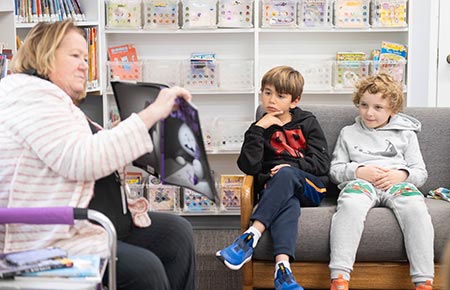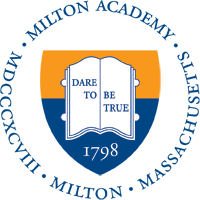Grade 2
Grade 2 students are the senior leaders of the Junior Building at Milton Academy. Having learned extensively about communities in prior years, Grade 2 students now become stewards of their own K–2 community. The Grade 2 year is designed to equip students with practical skills to manage their own learning process and social landscape with greater autonomy and agency, which they will need in the upper grades of the lower school. Even as we support students towards independence in these areas, we also continue to emphasize the importance of thinking interdependently to solve academic, social, and community problems. In addition to exploring geometry and data, Grade 2 mathematicians move towards solving sophisticated addition and subtraction problems, thinking critically about efficient strategies, applying their expanding knowledge of place value and our number system, and generalizing about and proving mathematical properties. Thanks to our small class sizes, we can provide individualized learning experiences for each of our students; this is especially true during our phonics and reading classes, where we use research-based, scientific approaches to support each child on their individual reading journey. Grade 2 students are beginning to internalize the fact that rigorous learning often involves play–that is, tinkering and puzzling, deconstructing and reconstructing, and developing one’s own inquiries to satisfy through investigation.

Math
- Content
- Addition and subtraction: advanced strategies, models, and related big ideas applied to more complex situations
- Understanding subtraction situations: removal, difference and constant difference, and missing addend problems
- The use of fractions in geometry
- The structures of our Base 10 number system, including place value
- Modeling with data: comparing and contrasting data visualizations
- Linear measurement
- The foundations of multiplication
- K-5 Math Practices
- Make sense of problems and persevere in solving them.
- Reason abstractly and quantitatively.
- Construct viable arguments and critique the reasoning of others.
- Model with mathematics.
- Use appropriate tools strategically.
- Attend to precision.
- Look for and make use of structure.
- Look for and express regularity in repeated reasoning.
Reading
- Phonics
- Phonological awareness skills
- Print awareness skills
- Decoding and word-solving skills
- Vocabulary development and word-learning strategies
- Reading fluency
- Accurate, fluent reading
- Appropriate phrasing and expression
- Reading pace
- Reading workshop
- Reading nonfiction to become an expert on a topic of interest
- Reading longer fiction texts: sustaining fluency, unpacking figurative language, and making meaningful connections across different parts of a single text
- Studying books in a series
Writing
- Strengthening “small moment” narrative writing by studying the authors we love: telling even stronger, more focused narratives that unfold with great detail in a short span of time
- Writing about reading
- Letter writing
- Fiction writing
Social Studies
- A Study of Family
- What is a family?
- Common, problematic assumptions about families
- Family as a factor in identity
- Arts integration: family portraits
- Math integration: family timelines
- Literature integration: poetry about family
- Curating a museum exhibit about family
Diversity, Equity, Inclusion, & Justice (DEIJ)
- Anti-bias: creating a safe and comfortable classroom environment; understanding bias and discrimination; challenging and confronting bias
- Racial literacy: diversity around the globe
- Social justice: Who are the activists in my community? Art and activism.
